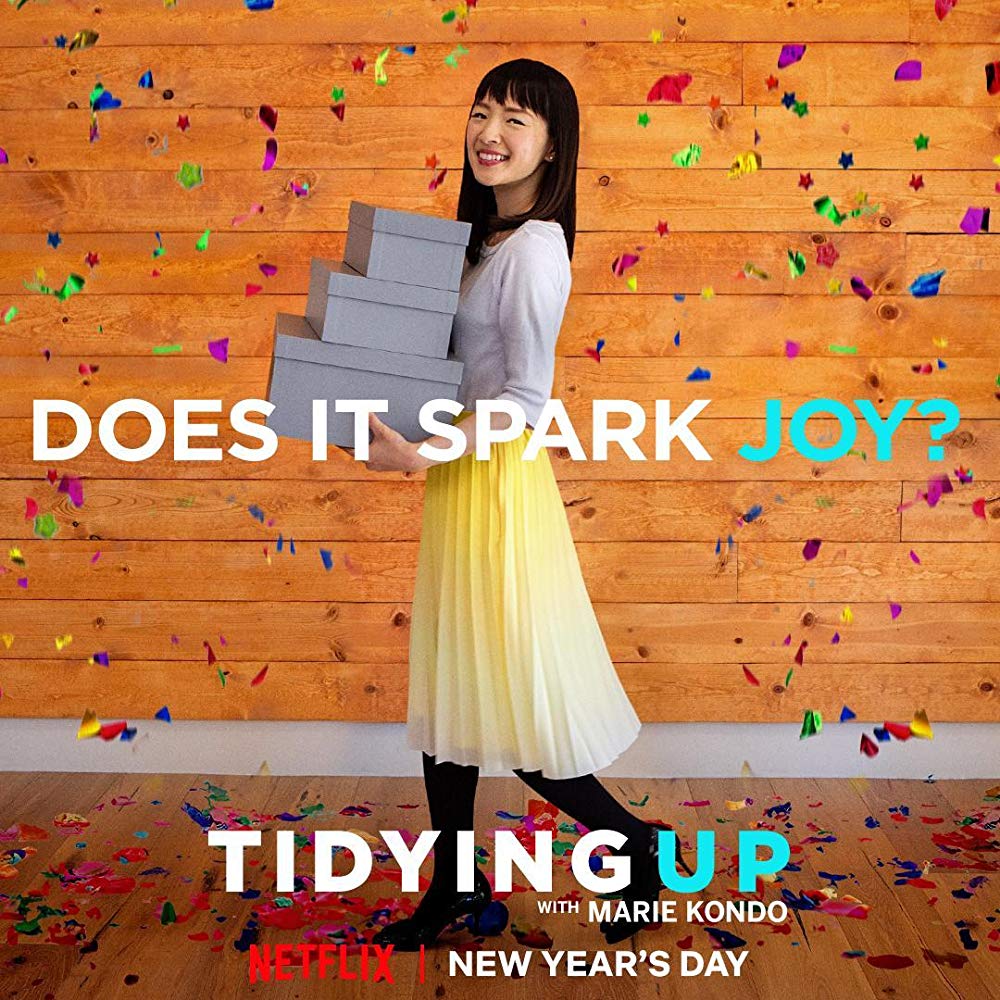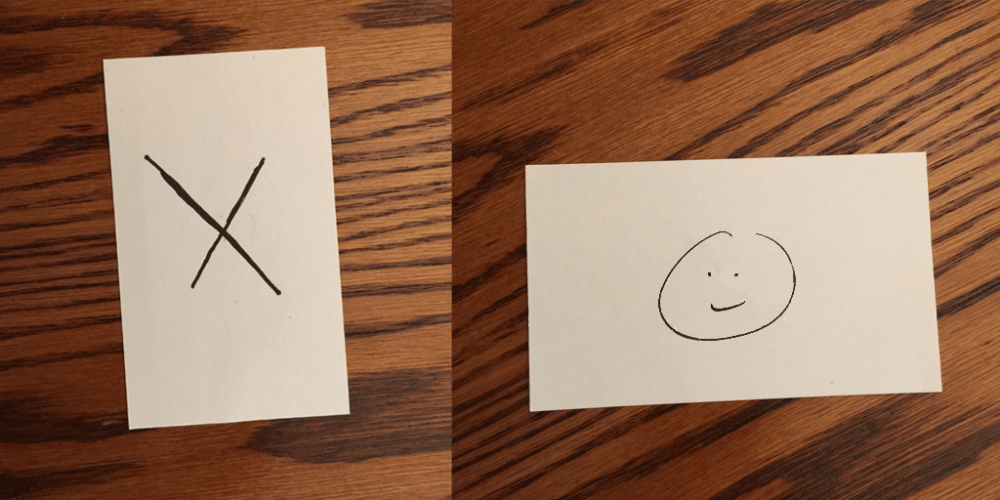A few years ago, a Netflix series called Tidying Up with Marie Kondo became popular, and a wave of decluttering your belongings was a lifestyle trend. Well, when you are playing your favorite Tabletop Roleplaying Game (TtRPG), do you ever look at your equipment/treasure list and think “my character could probably KonMari as well!” If so, you’re not the only one. That’s why Kalum of The Rolistes Podcast decided to make a mini-TtRPG based on encumberance rules, and bring the Paris (French pronunciation to rhyme with Marie) Gondo method to your dungeon-delving, monster-slaying, loot-collecting adventurer.

They sent me a copy of their new book, which is now on Itch.io, and I had the pleasure of reading through this system, which is really a set of minigames, which leads to a fun one-shot type game. For a game about monster-fighters, you don’t ever actually fight any monsters, but instead it focuses entirely on the loot that you collect at the end of the dungeon, and how you choose which treasure to actually take. There isn’t any overarching goal, but it’s intended to just be fun, which is a wholesome goal itself.
I will say, this book is very lighthearted and silly. Something I’m not familiar with, but is apparently popular with Japanese TtRPGs, is to open the book with a “Replay,” a written example of playstyle that you might run in the game, including side comments and filler words. The group in this narrative is a fun set of friends, cracking jokes and being playful overall.
Basic Rules
This game is made for three to six players, and takes you through a total of Six Steps, The Dungeon, The Party, The Loot, The Life-Saving Magic of Inventorying, The Journey Home, and The Emotional Epilogue. Basically, there are two steps of set up, two steps of gameplay, and two steps of results, so there is an actual goal, but it’s pretty minimal, with an inconsequential level of failure possible.
First, The Dungeon. You can either randomly roll on a d6 table, which assigns you the description, place, and boss, or as a group you can collective imagine and improvise where you were, what is was like, and who was the ultimate boss you defeated.

Then, The Party, where you can choose between six classes, which gives you some Starting Inventory, and a Maximum Encumbrance. You also create a name for your character, and a brief description, based on whichever of the Starting Inventory you find most interesting.

After that, we start on The Loot, which is where the game really begins. You and your Party have just defeated The Boss of The Dungeon, and now must come up with what Loot you have found. You randomly generate stats for pieces of loot, for Encumbrance, Usefulness, and more. This is fun, because you get a few random stats, and you decide what the item is, what it’s called, and maybe a short description of it’s importance. It’s just a time to be super creative with your friends, and make stuff up.
![OC] Silly D&D Item - Cube of The Rube : DnD](https://preview.redd.it/gc95bjauqyr61.png?auto=webp&s=94d3600425db8b3569bda2bec72e2faf8f069c07)
Now, for the part that’s most heavily based on Marie Kondo and the KonMari Method, The Life-Saving Magic of Inventorying. Here you must decide, based on the Loot you’ve created, as well as your Starting Inventory, decide what items you are going to keep, and which you are going to leave behind. Again, you cannot go past your Maximum Encumbrance, but if your other stats, such as Usefulness, isn’t high enough, you’ll have negative consequences as you leave. Of course, part of this is also about trading magic items between party members.

The Journey Home, as many TtRPG players know, can be just as dangerous as the journey through the dungeon. Here, you must balance the Usefulness of your items you kept, and if you don’t roll high enough, then your character might perish as they leave the dungeon. How it happens is up to you, to find something fun or funny.

Lastly, we have The Emotional Epilogue. A core premise of the KonMari method is whether or not something “Sparks Joy.” Because of this, you must also determine, via roll, if you are happy with your belongings, and that they aren’t just strictly utilitarian. Are you emotionally satisfied with your loot, and if not, how does it affect you until your next adventure?
With that, the game is over. As I said, it’s entirely meant to be run in a single sitting, and be just a fun romp with lots of creative ideas.
Integration
Personally, I find this most exciting in adding the system to my current dungeon-delving game. As a Game Master (GM), I tend to ignore encumbrance in my games, because I’ve never found any interesting way to include it. However, this can be a blast to include. Obviously the first Act of the game, The Dungeon and The Party, would all be preset, but the second Act is where the meat is. If you are playing a low-stakes game, I would absolutely let my players randomly generate the Loot, and come up with ideas on their own. In the Replay of the Rule Book, there are fun items like sticky accordions and a Magic Horse. In TtRPGs, a lot of times the world is created by the GM, and so all of the surprises are reserved for the players, however with this system, the GM can be equally surprised by what happens, and have to react to it, which can be a great breath of fresh air.
The third Act might seem a bit complicated to include, but if you include Downtime in your TtRPG games, where there isn’t a strict adventure or goal, and the Player Characters (PCs) have to interact with the world on their own terms, then this would be a great jumping off point for them to use. Did they get injured on the Journey Home, and have an injury you can’t sleep off, or are you just disappointed overall with your adventure, and have to find a way to settle it in the Emotional Epilogue?
If encumbrance is a system you’ve overlooked, like I have, then this quick game might help you give it more importance at your table.
Session 0 Example
There’s something else interesting with this game that I wanted to mention. I’ve previously talked about the idea of a Session 0 in your TtRPG games, where you not only create your characters, but also discuss what you do and don’t want in your games. What are the aspects of games that you enjoy, and what are some things that you don’t want to have at the table? Well, this game includes those two aspects, as well as a framework to discuss it. Along with the rules, is an “X Card” and a “Spark Joy Card.” With the Spark Joy Card, everyone has some pebbles, and if anything in the game “Sparks Joy”, then you place a pebble on the card, to signify that this is the type of fun that you are here for. If in the game something happens that might make you not have fun anymore, like instances of animal cruelty, sexism, etc, then you can tap the X Card and that line of the story will end. You don’t need to explain yourself, because we all have things that affect us in our life, and we want it to just not be around when we are having fun.

Overall I think this little game is a ton of fun, and definitely worth checking out if you like One Shot style TtRPGs, or are looking for a new way to run Encumbrance in your game.
You can check out the Paris Gondo – The Life-Saving Magic of Inventorying on itch.io.
